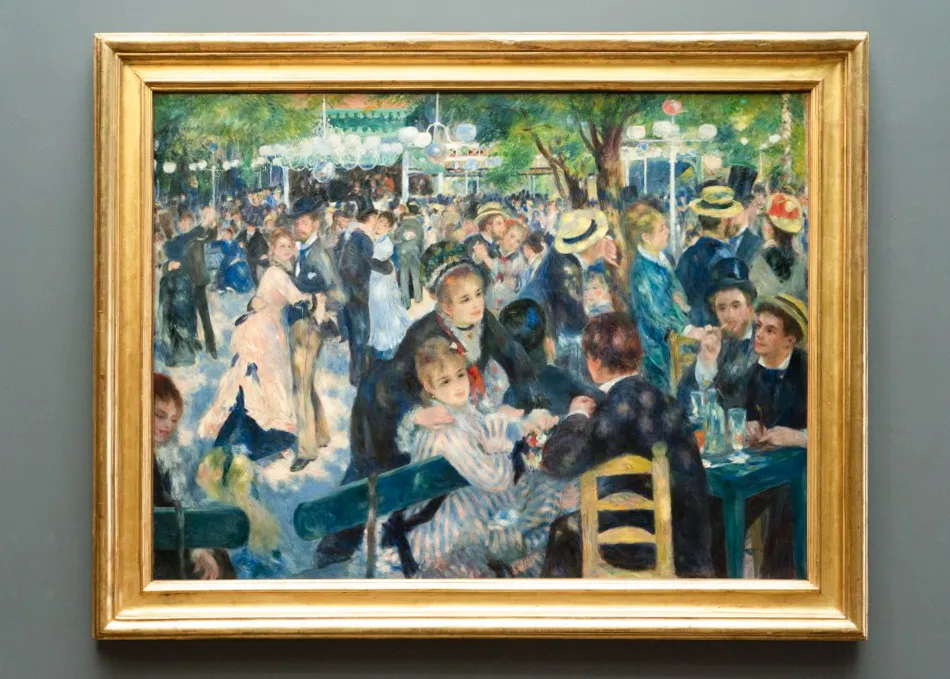The Orsay Museum, nestled along the romantic Seine River in Paris, is a must-visit destination for art lovers. Renowned for housing the world’s largest collection of Impressionist paintings, this museum is not only an art gallery but also a unique architectural marvel, once a historic railway station. Each year, the Orsay Museum attracts millions of visitors eager to admire the beauty of art and architecture.
Often called the “paradise of Impressionism,” the Orsay Museum boasts an immense collection of masterpieces by masters such as Degas, Manet, Monet, Van Gogh, and Renoir. These works not only reflect 19th-century life but also represent the origins of modern art. Join Discovery To Wonders to explore the iconic paintings that have made the Orsay Museum famous, a place where art and history intertwine, offering unforgettable experiences for visitors.
Discovering the Impressive Art Treasury at the Orsay Museum
The Orsay Museum is not just a famous tourist spot but also a priceless art treasury, preserving top-notch paintings from the Impressionist and Post-Impressionist movements. To have a complete and meaningful visit, let’s explore the layout of the exhibition areas and the iconic artworks you shouldn’t miss.
Useful Information Before Your Visit
To ensure a smooth visit to the Orsay Museum, here’s some useful information you should know:
- Visiting Time: To fully appreciate the artworks at the museum, you should allocate at least 4 hours.
- Queue Time: The Orsay Museum is a popular destination, so you should book tickets online in advance to avoid long queues.
- Best Time to Visit: Wednesday or Friday mornings are usually less crowded, allowing you to enjoy the artworks more comfortably.
- How to Find Your Favorite Artworks: Before visiting, you can refer to the museum map on the official website to locate the artworks you want to see.
Must-See Paintings
The Orsay Museum’s permanent collection is arranged by floor and presented according to the development of art. Let’s explore the iconic artworks in each area:
Level 0-2: Sculpture and Painting Before Impressionism
This area exhibits sculptures from 1850 to 1880, along with works by Courbet, Degas (before 1870), Millet, and artists of the Realist, Symbolist, and Academic movements.
- Thomas Couture, The Romans of the Decadence (1847): This painting depicts the moral decay of French society through the image of ancient Romans.
The Romans of the Decadence painting by Thomas Couture, depicting the moral decay of French society, displayed at the Orsay Museum
- Jean-François Millet, The Gleaners (1857): A famous painting depicting the poverty of the lowest class in rural society.
The Gleaners painting by Jean-François Millet at the Orsay Museum, portraying the poverty of rural farmers
- Jean-Baptiste Carpeaux, The Four Parts of the World Supporting the Celestial Sphere (1866): A sculpture representing the unity of the four continents for the Earth.
The Four Parts of the World Supporting the Celestial Sphere sculpture by Jean-Baptiste Carpeaux, symbolizing the unity of continents at the Orsay Museum
Level 3-4: Decorative Arts of the Late 19th Century
This area showcases decorative art in the Art Nouveau style from Britain and Austria, including furniture, lamps, and vases.
- Christopher Dresser, Soup Tureen (1888): An elegant soup tureen in a modern Anglo-Japanese style.
Soup Tureen, an elegant soup tureen by Christopher Dresser in a modern Anglo-Japanese style, displayed at the Orsay Museum
- Louis Comfort Tiffany, Vase (1915), Vase (1915), Vase (1900): Unique “favrile glass” ceramic works by Louis Comfort Tiffany.
Collection of "favrile glass" vases by Louis Comfort Tiffany, an artistic highlight at the Orsay Museum
- Josef Hoffmann, Basket (1904): Decorative artworks notable for geometric lines and quadratic themes.
Basket by Josef Hoffmann, a geometric decorative artwork displayed at the Orsay Museum
Level 5: Treasury of Impressionist and Post-Impressionist Painting
This is the most important area of the museum, concentrating famous works by Manet, Monet, Cézanne, Gauguin, Pissarro, Renoir, Seurat, and Toulouse-Lautrec.
- Edouard Manet, Luncheon on the Grass (1863): A painting that attracted attention with its bold composition and realistic colors.
Luncheon on the Grass painting by Edouard Manet, notable for its bold composition at the Orsay Museum
- Auguste Renoir, Bal du moulin de la Galette (1876): A famous painting depicting the life of Parisians on a Sunday afternoon in Montmartre.

- Vincent Van Gogh, Van Gogh’s Room in Arles (1889): A painting depicting Van Gogh’s bedroom with strong contrasting colors.
Van Gogh's Room in Arles painting, a famous work by Vincent Van Gogh at the Orsay Museum
Unique Experiences at the Orsay Museum
Besides admiring artworks, the Orsay Museum offers other unique experiences:
- Taking photos with the Orsay Clock: This is one of the most Instagrammable spots in Paris, with stunning views of the Seine and the Tuileries Garden.
Orsay Clock, an Instagrammable photo spot with views of the Seine and Tuileries Garden
- Enjoying brunch at Café Campana: This luxurious Art Nouveau-style café is an ideal place to relax and enjoy the artistic ambiance.
Brunch experience at Café Campana, a luxurious Art Nouveau space inside the Orsay Museum
Conclusion
The Orsay Museum is not just an art museum but also a cultural symbol of Paris. With its impressive collection of paintings and unique architecture, this museum offers memorable experiences for visitors. We hope this article has provided you with useful information to explore the priceless art treasury at the Orsay Museum. Wishing you a truly enjoyable and meaningful trip!